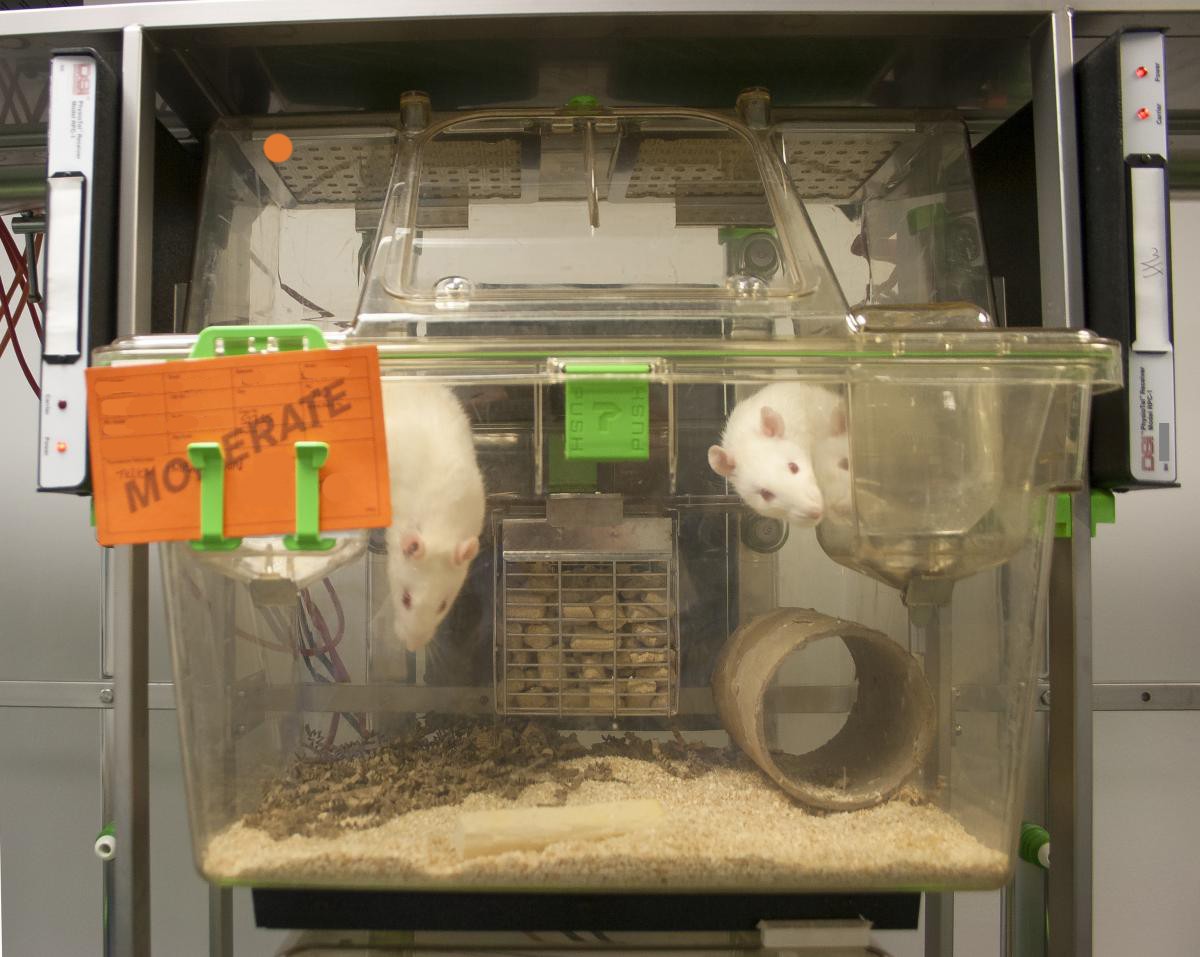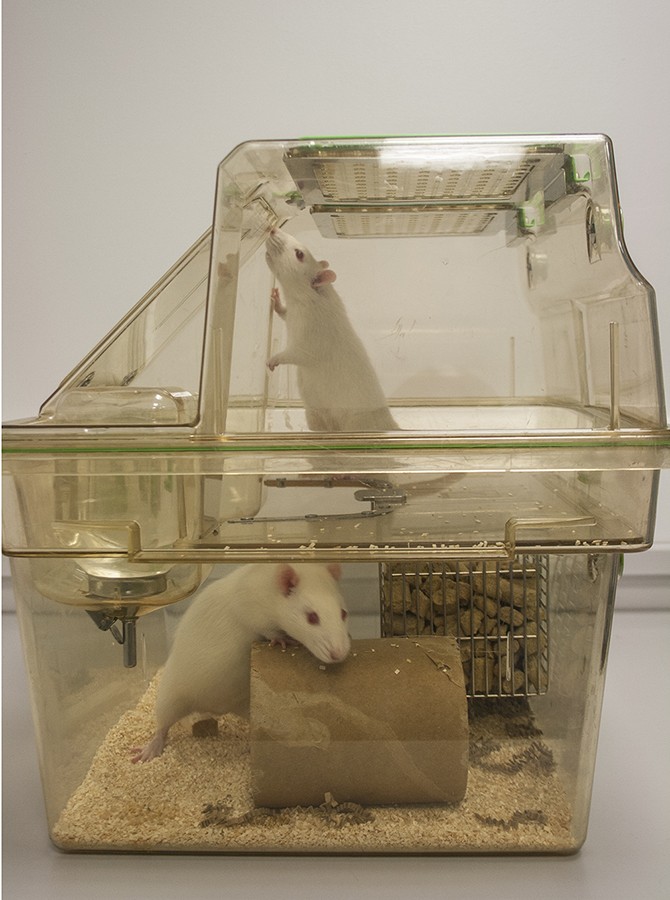Double-decker rodent telemetry
Rats being studied via telemetry are usually housed in single-storey individually ventilated cages (IVCs). This is because they must remain in close proximity to the telemetry receiver, which is positioned directly beneath the cage. However, double-decker (D-D) rodent IVCs allow rats to engage in natural behaviours such as upright posture and stretching, which have been shown to improve their welfare [1].

Matt Skinner of Vivonics Preclinical Ltd, Pete White of Xenogesis Ltd and Peter Ceuppens of Inferstats Consulting Ltd worked to assess whether telemetry recordings could be made from rats socially-housed in D-D cages and whether use of D-D cages would affect the ability to detect drug-induced changes in cardiovascular parameters.
To do this, male Sprague-Dawley rats were equipped with telemetry transmitters (DSI C50-PXT) to record arterial blood pressure, heart rate, body temperature and activity. Each was housed with a non-instrumented companion. Telemetry signals were recorded in both standard IVCs (one receiver) and D-D IVCs (four receivers), as rats received either vehicle or verapamil. Blood samples were also taken by tail vein microsampling in both phases.

This work demonstrated that recording from telemetered rats socially-housed in D-D cages is technically possible and drug-induced cardiovascular changes can be detected with no significant differences versus results obtained in standard caging. This augments the previously established benefits of using D-D housing to rat welfare.
Download a poster summarising this research, presented at the 2017 SPS Annual Meeting. The results of a survey relating to social-housing and the use of double-decker cages in rat telemetry studies have also been published [2].
References
- Makowska IJ, Weary DM (2016). The importance of burrowing, climbing and standing upright for laboratory rats. Royal Society Open Science 3: 160136. doi: 10.1098/rsos.160136 [This paper was awarded the 2016 International 3Rs Prize.].
- Skinner M, Ceuppens P, White P, Prior H (2019) Social-housing and use of double-decker cages in rat telemetry studies. Journal of Pharmacological and Toxicological Methods 96: 87-94. doi: 10.1016/j.vascn.2019.02.005
